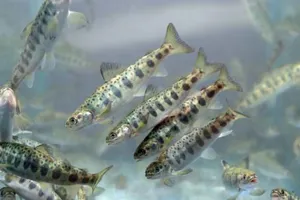
Reintroduction to the wild
SEA LIFE Hannover is committed to preserving Atlantic salmon for future generations together with Leine-Lachs e.V.
How does the reintroduction work?
Received: Returning fish are caught so that they can shed eggs and seeds. The fertilized eggs are artificially incubated in the hatchery of the North German Salmon Center in Gronau.
Grooming: The young are nursed until they can be distributed to the appropriate waters.
Release: The SEA LIFE Aquarium Hanover presents some of the young animals in tanks and releases them regularly together with the Leine-Lachs e.V.
Leine Lachs e.V. & SEA LIFE Hanover - a cooperation for Atlantic salmon. The association Leine-Lachs e.V. was founded in 2004 by fishing associations that deal with the reintroduction of salmon in the Leine and its tributaries. Approx. 18,000 organized anglers from 34 clubs from Northeim via Hanover to Schwarmstedt are working on the project today. The aim of the association is to build a self-sustaining salmon population in the Leine and the necessary ecological continuity of the river.
Threatened by extinction
The Atlantic salmon is critically endangered. Why?
There are several reasons: Barrages and weirs prevent reaching the spawning grounds. In addition, overfishing is a major problem during its stay in the sea. Furthermore, the eggs die due to a lack of oxygen from fine sediments in the gaps in the gravel bed at the spawning area.
Life cycle
The Atlantic salmon spends the beginning of their life in native freshwater waters, where they go on their first prey hunt and prepare for their migration into the Atlantic Ocean. In salt water they go through a period of rapid growth. Until they have reached a weight of at least 250g, they are easy prey for seals, common seals and predatory fish. After that they move back to their native freshwater waters to spawn.